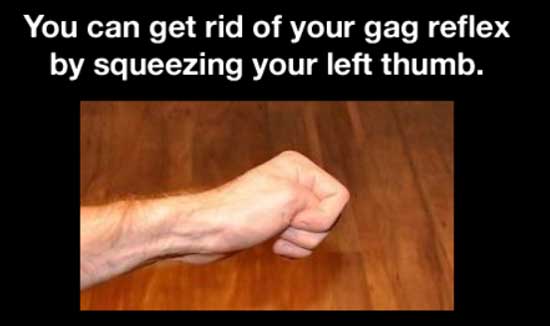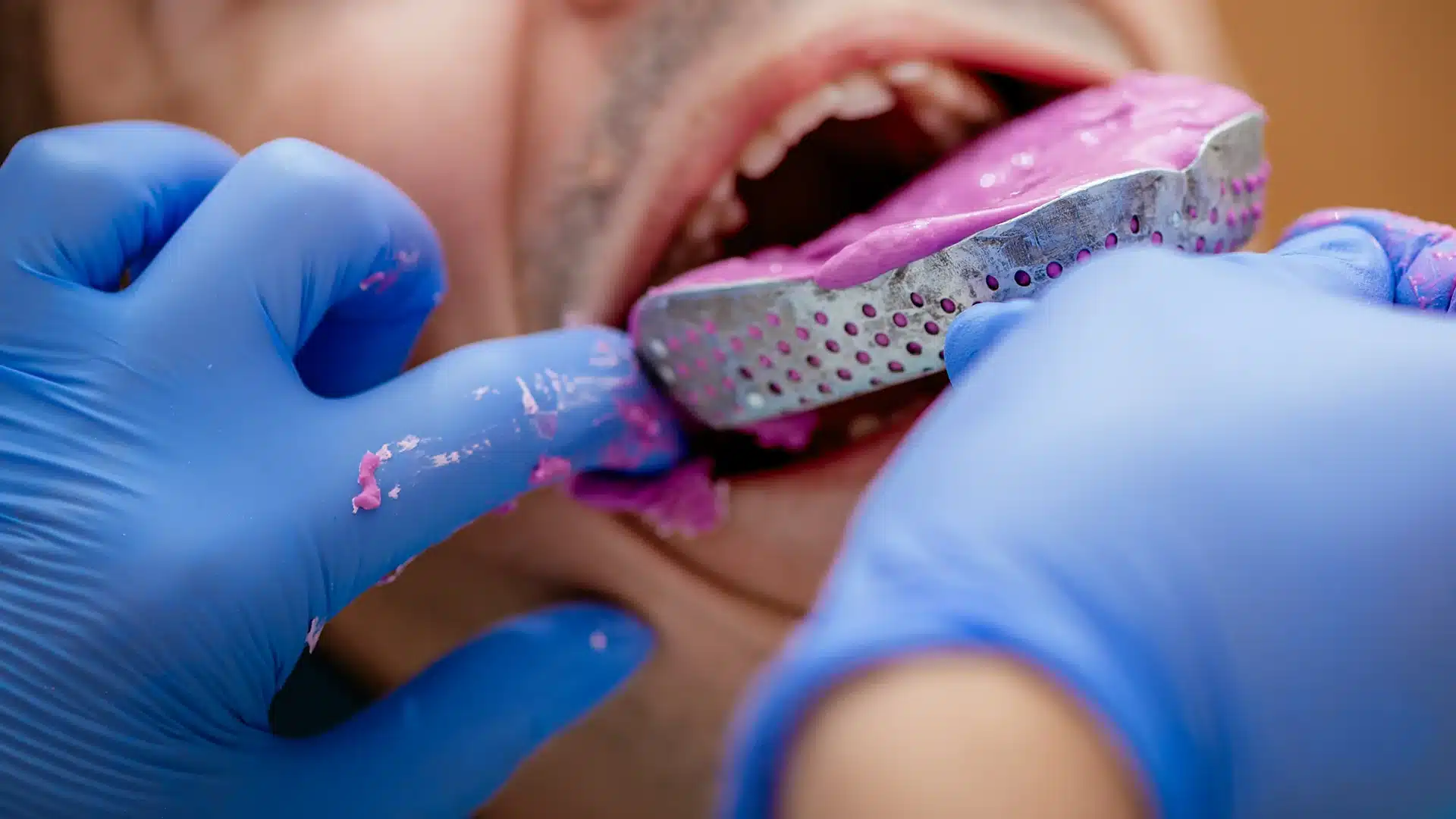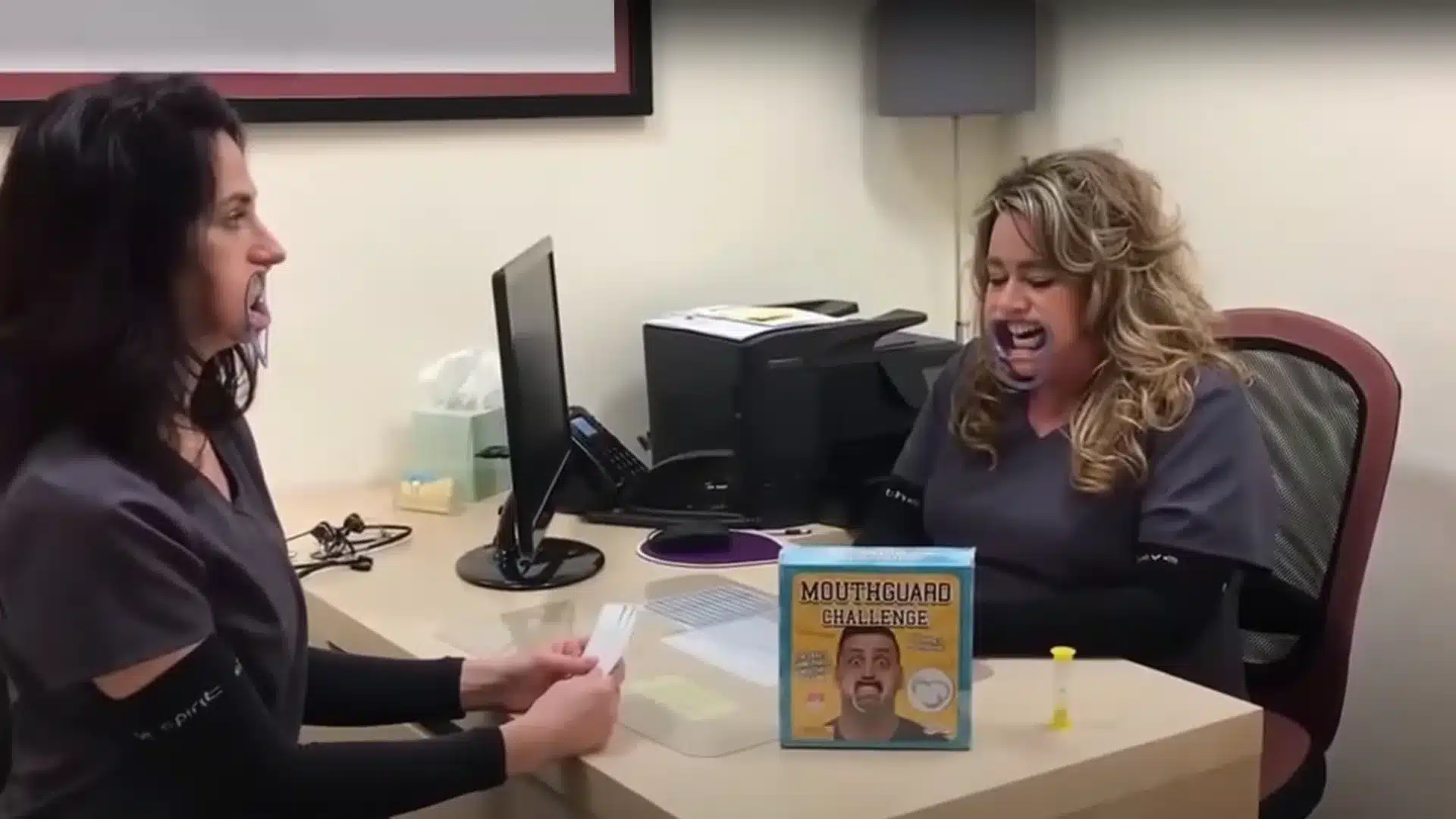Do you dread getting radiographs or having impressions taken at the dentist office, specifically because it makes you gag?!
You are not alone. About 10-15 percent of dental patients suffer from hypersensitive gag reflex (HGR). And, like you, they dread getting radiographs and impressions. The goal of this blog post is to explain why you are gagging and, perhaps more importantly, what you can do to help minimize our gag reflex whenever you’re in the dental chair.
Your Gag Reflex Is An Involuntary Reaction
The gag reflex, or laryngeal spasm, is basically the uncontrolled contraction of the back of the throat by an object touching the roof of your mouth, the back of your tongue, the area around your tonsils, or the back of your throat.
It is an involuntary reflex in the same way your leg ‘kicks’ when your doctor knocks the right spot on your knee with one of those little triangular rubber hammers.
A gag reflex is a built-in safety feature we, as human beings, have developed to prevent ourselves from choking when we are shoveling food down our throats too fast. Come on, I know I’m not the only one.
Let’s first examine what happens when we gag. By thrusting objects in the throat toward the opening of the mouth, the gag reflex expels substances that the brain has deemed harmful. If we did not have this protective feature programed, our immature baby digestive system would be overwhelmed.

In the first few months of a baby’s life, this reflex is triggered by any food that a region of the brainstem called the “nucleus tractus solitarius” (which is wired to nerve endings in the mouth) judges to be too chunky for a baby’s system to process.
Starting around the 6- or 7-month mark in babies, the gag reflex diminishes, allowing a baby to start swallowing chunky or solid foods.
In older children and adults, the reflex is usually only triggered by the presence of an unusually large object in the back of the throat.

However, as I mentioned at the beginning of this blog post, 10-15 percent of people have a hypersensitive gag reflex (HGR) which continues to get activated by substances in the mouth – like a dental radiograph sensor or impression material.
Suppressing Your Gag Reflex
As with most relationships, communication is key. We can’t help you fight an exaggerated gag reflex if you are suffering in silence. Let us know if ahead of time because there are ways we can help, and things you can do, to help prevent that awful feeling.
What We Can Do To Help
So what can we do to help you override your brain’s gagging reflex when you’re sitting in the chair?
I can tell you there is no single quick fix that works for everyone. Gagging can actually be due to psychological factors, or physiological factors, or both. But since this reflex is controlled in the region of the brain called the hypothalamus, we can try to “fool” the brain by stimulating other reactions controlled in the same region.
1. Salty Q-Tips
One method I like to use to “fool the brain is to introduce a strong taste to help stop gagging. We place a Q-tip with salt on the tip of our tongue, stimulating taste sensors. We’re basically giving the hypothalamus a second signal. I have actually had great success using this simple trick.
2. Numbing Lollipops
A second way to stop gagging is to decrease your brains ability to process information coming from the mouth. We do this by numbing all sensation of touch in the mouth by having the patient suck on a numbing lollipop. A lollipop made with tetracaine 1%. This is the same medical topical anesthetic utilized after tonsillectomies or for sore throats.
3. Laughing Gas
If you are a severe gagger, laughing gas can help. Nitrous oxide inhalation sedation significantly reduces the gagging/retching reaction.
4. Distractions & Diversions
This last concept we use pretty regularly for all our patients when we are taking impressions or radiographs. We are basically attempting to take your focus off of the impression or the placement of the radiograph sensor in your mouth.
We ask you to “point your toes toward your nose” because concentrating on those instructions and flexing muscles help distract you by sending additional signals to the brain, thereby “fooling the brain” to help you get through your dental procedure.
We have also asked patients to squeeze a stress ball, listen to music through headphones or envision their happy place (self-hypnosis techniques) – which are all excellent distractions as well. We use various distractions and diversions throughout our day since it means a better overall experience for everyone.
What You Can Do To Help
So what can you do to help you override your brain’s gagging reflex when you’re sitting in the chair?
Again, no single tactic is going to work for every person every time; however, there are things you can do to help your mind (and body) get over the matter at hand whether you’re having an impression or an xray or any other dental procedure that is triggering your gag reflex.
1. Breathe
This sounds simple, but you might be surprised to learn how many people hold their breath during dental procedures. The goal instead is slow, steady breathing through your nose.
Close your eyes and concentrate on your breathing. It is good for your body and great for relaxation. (Think yoga, meditation, hypnosis.) Relaxing really helps. If you are clutching the dental chair arms and tensing up, it will increase your likelihood of gagging.
2. Make A Fist

A 2008 study suggests that you can alter your gag reflex by applying pressure to a point in the palm of your hand. To try it, you simply make a fist with your left hand, squeezing your thumb.
We’ve found patients who place their hands in their laps and massage their left palm with their right thumb also helps.
3. Desensitize Your Tongue
One of the things you can do at home is work on desensitizing our tongue. When you’re brushing your tongue and working on desensitizing, make sure to breathe through your nose to help lessen your gag reflex, too.
We found these instructions here which may help you lessen your gag reflex over time:
Start from the farthest tip of your tongue, then work your way in deeper.
- Once you begin to gag, try to brush that area for about 10 seconds even while you’re gagging. This process is quite unpleasant, but training yourself not to gag naturally involves some gagging. Stop brushing when you feel like you can’t continue any longer; training yourself can’t be done in a day.
- Repeat the process over the next few days, concentrating on the exact same spot. You’ll notice that you gag less each time you repeat it. Stay on the same spot until you can handle most of the gagging or gagging completely stops. That part of your mouth is now desensitized.
- Reach deeper into your mouth using the toothbrush. Try brushing half an inch behind the desensitized spot. Keep moving further back until you’ve reached the farthest area that the brush can reach.
If you are prone to gagging at the dentist office, we get it. We realize it is beyond your control and we’re here to help you with encouragement, diversions, a positive attitude and years of experience treating patients with patience.
Need a little diversion during your dental appointments?! Come see us,





